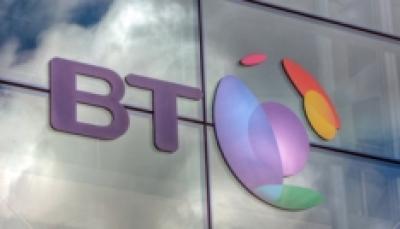

Winners of BT’s Race to Infinity competition, which was designed to bring superfast broadband to rural areas, will not be completely covered in fibre.
The village of West Hagbourne in Oxfordshire is connected to the Blewbury exchange, one of the winners of the contest. But, although the Blewbury exchange will get Fibre-to-the-Cabinet (FTTC), West Hagbourne won’t get superfast broadband, because it is too far from the exchange.
Blewbury was announced as one of the Race to Infinity winners in January 2011, after BT let people vote for where they would like to see exchanges hooked up with fibre connections. In winning areas, almost all customers had registered interest in having fibre.
BT said it told competition entrants that not all premises would get superfast broadband in winning areas. “The race offered the winners an upgrade to an exchange,” a spokesman said, explaining that it had clearly stated that the competition did not guarantee superfast broadband to every premises connected to any upgraded exchange.
“However the work carried out at Blewbury does mean that we expect every premise attached to the exchange will see an increase in their broadband speeds,” said the BT statement. “While West Hagbourne is at the end of a long line, we still believe people living and working there to see an improvement in their broadband service.”
BT said 1,000 premises served by the Blewbury exchange would be able to receive superfast broadband.
The difficulty is simple physics. While the light signals along fibre-optic cables can cover massive distances, electrical resistance and interference limits the distance over which broadband signals can be carried on copper cables for the last leg to the premises. The further a building is from an exchange, the slower the speeds, as longer lines cannot sustain higher bandwidths.
BT has said numerous times it believes investment in fibre in remote parts of the UK will help push speeds up. Connections will still not be anywhere near as quick as those premises close to exchanges, however.
Other technologies have been touted for bringing higher bandwidths to the most rural parts of the UK, otherwise known as the final 10 per cent. Satellites have proven worthy, whilst BT is one comms provider looking at using white space, where the 470MHz to 790MHz bands used by the Digital Terrestrial TV.
The telecoms giant is set to trial the latter technology in Cornwall, once the current joint-testing of 4G with Everything Everywhere is complete in July. It has already carried out white space trials in the Ilse of Bute and Cambridge.
Ofcom has given its support to the technology. It published plans last year in which the regulator said it expects white space services to be launched in the UK next year. That would make the UK a front-runner in Europe – something the nation is not used to in the broadband space.
Binance BNB token rises after WSJ report the Trump family is in talks to secure…
After failed Amazon deal, iRobot warns there is “substantial doubt about the Company's ability to…
Community Notes testing across Facebook, Instagram and Threads to begin next week in US, using…
Complete 180. FTC attorney now says federal agency can pursuit Amazon trial, after citing “severe…
Former board member and respected chip industry veteran Lip-Bu Tan appointed to lead troubled US…
MPs demand secret High Court hearing be held in public, after government had ordered a…